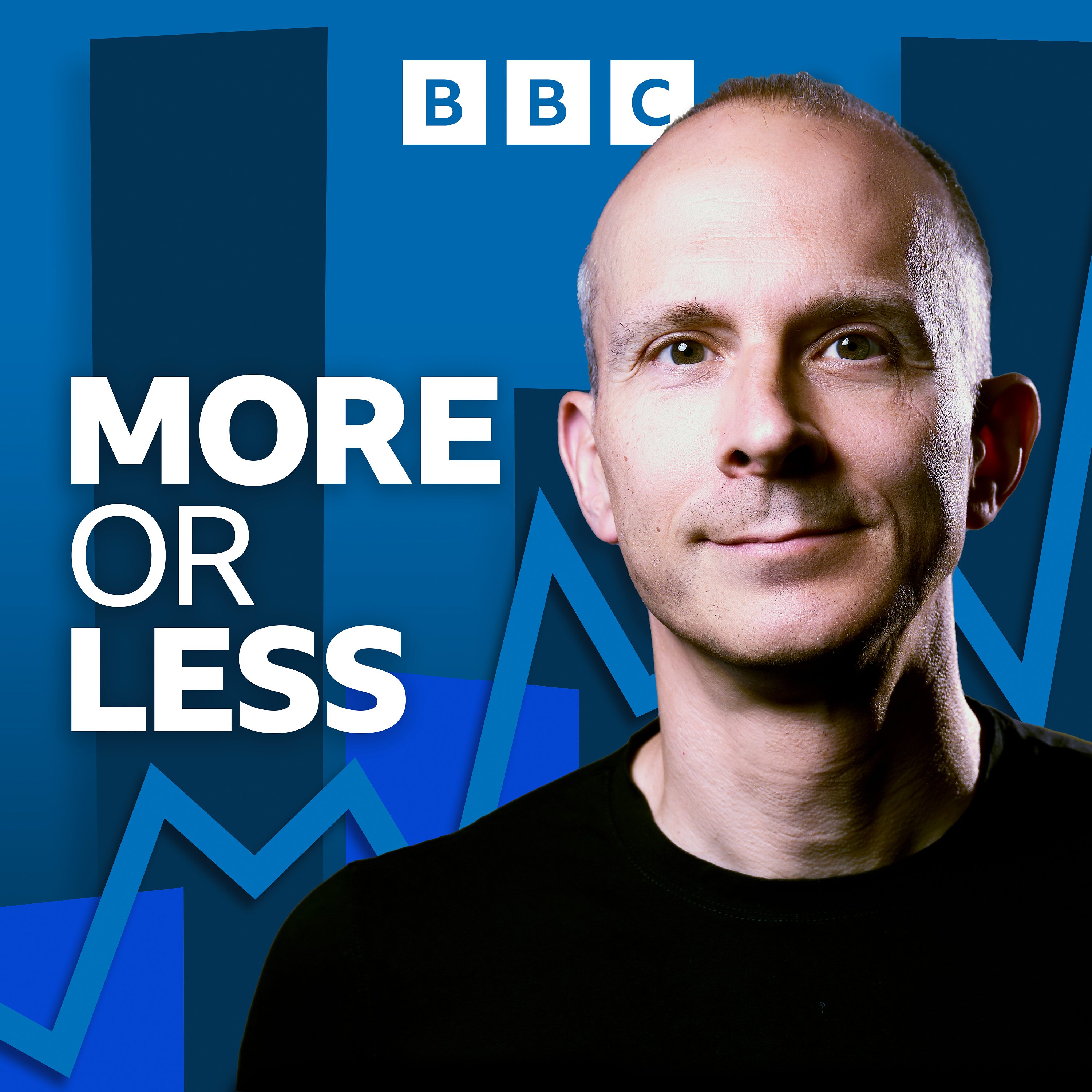

More or Less
BBC Radio 4
Tim Harford explains - and sometimes debunks - the numbers and statistics used in political debate, the news and everyday life
Episodes
Mentioned books

Nov 7, 2020 • 9min
How deadly is Covid 19?
Tim Harford explores what we know about mortality rates in the current pandemic. We discuss the differences between the risks to different age groups, and why that has an effect on a country’s Covid 19 fatality rate.
We speak to Dr Hannah Ritchie from the University of Oxford and Dr Daniel Howdon of the University of Leeds in the UK.

Oct 31, 2020 • 9min
Asymptomatic Covid19 Cases
A headline in a British tabloid newspaper claimed that ‘Staggering 86% who tested Covid positive in lockdown had NONE of the official symptoms’ but what does this mean and is it true?

Oct 24, 2020 • 9min
US election: facts or fiction
Tim Harford hears about the sheer volume of false claims made during the campaign. President Trump is well known for making wild statements, but has his behaviour changed? And what about Joe Biden? So much attention is concentrated on Trump’s claims, how does the Democratic candidate fare? Glenn Kessler at the Washington Post and Katherine J Wu at the New York Times tell us about fact-checking during the run up to the election.

Oct 17, 2020 • 9min
Auction Theory - Paul Milgrom and Robert Wilson
Paul Milgrom and his former tutor Robert Wilson worked together for years developing ways to run complicated auctions for large resources. This month the two Stanford University professors were awarded the Nobel memorial prize in economics for their work. The auction formats they designed facilitated the sale of goods and services that are difficult to sell in a conventional way, such as radio frequencies.

Oct 10, 2020 • 9min
A short history of probability
Explore the correspondence between Pascal and Fermat as they tackle the problem of the points, learn about fair distribution of winnings in a game of chance, discover the fascinating story of John Law and his use of probability, explore the calculation of the probability of death and annuity rates, and uncover the slow acceptance of probability as a revolutionary concept.

Oct 7, 2020 • 21min
Spreadsheet snafu, ‘Long Covid’ quantified, and the birth of probability
After nearly 16,000 cases disappeared off coronaviruses spreadsheets, we ask what went wrong. How common are lasting symptoms from Covid-19? If you survey people about the death toll from Covid, they’ll make mistakes. What do those mistakes teach us? Pedants versus poets on the subject of exponential growth. And we dive deep into the unholy marriage of mathematicians, gamblers, and actuaries at the dawn of modern finance.

Sep 30, 2020 • 29min
“Record” Covid cases, Trump on the death count, and ant pheromones
Case counts in perspective, a suspect stat from the US, and life lessons from insects.

Sep 23, 2020 • 29min
Covid curve queried, false positives, and the Queen’s head
A scary government graph this week showed what would happen if coronavirus cases doubled every seven days. But is that what’s happening? There’s much confusion about how many Covid test results are false positives - we explain all. Plus, do coffee and pregnancy mix? And the Queen, Mao, and Gandhi go head to head: who is on the most stamps and coins?

Sep 19, 2020 • 9min
The magical maths of pool testing
Tim Harford speaks to Israeli researcher, Tomer Hertz, about how the mathematical magic of pool testing could help countries to ramp up their Covid-19 testing capacity.

Sep 16, 2020 • 28min
Covid testing capacity, refugee numbers, and mascara
Amid reports of problems with coronavirus testing across the UK, we interrogate the numbers on laboratory capacity. Does the government’s Operation Moonshot plan for mass testing make statistical sense? Has the UK been taking more refugees from outside the European Union than any EU country? We explore the connection between socio-economic status and Covid deaths. And we do the maths on a mascara brand’s bold claim about emboldening your eyelashes.


